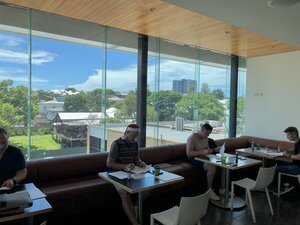How To Use The “science Of Happiness” At Work
Science shows that people who are happy at work, are more productive and more sought after leaders and team members. So if it is so beneficial, how can we encourage more of it?
I host a 10 minute session each week for all Wiley staff on Positive Leadership. Most recently we have been exploring “The Science of Happiness” and the PERMAH model by Martin Seligman (Positive Emotions, Engagement, Relationships, Meaning, Accomplishment and Health).
One of the ways we have made this tangible is arriving in these orange** envelopes into the mailboxes of Wiley staff over the New Year period.
So… what is it?
Each year, Wiley has a tradition of employee excellence awards, and culture awards. These are peer nominated, and hotly contested. Although the winners’ nominations are shared, there are hundreds of amazing peer nominations that historically don’t get shared… until now.
This year we have gone through the hundreds and hundreds of nominations, and created letters of congratulations for all those who were nominated, including the reasons they were nominated by their peers. In addition, these have also been read and signed by a number of the leaders at Wiley (…and perhaps a few funny messages too! They were in the festive spirit, as you can see by the Santa hat signing session photo below)
So how did this activity link with the Science of Happiness? Well, it ticks 5 of the 6 boxes of the PERMAH model by Martin Seligman (n.b. The ‘H’ of Health was added after the model was originally created, so you may see the model with or without the ‘H’).
Positive Emotions (nominations shine the light on what’s good) ✅
Engagement ✅
Relationships (they were nominated by their peers) ✅
Meaning (increase feelings of making a difference and purpose at work) ✅
Achievement (a sense of accomplishment by being externally recognised) ✅
This is just one example of Positive Leadership in a workplace. Have you done something similar? How could you bring Positive Leadership into your work environment?
**I have been asked ‘Why Orange?” Orange is their company brand colour, but also has significance in colour psychology: “Orange combines the energy of red and the happiness of yellow. It is associated with joy, sunshine, the tropics. Orange represents enthusiasm, fascination, happiness, creativity, determination, attraction, success, encouragement and stimulation.”
Learn more about the Wiley Culture here: https://www.wiley.com.au/culture/
If you’re curious to understand more about the Science of Happiness, this is a great link from the PositivePsychology.com https://positivepsychology.com/perma-model/




